Oct 16, 2022
Koyo, or Fall Colors in Tokyo
One great thing about Japan is that all four seasons’ splendor can be appreciated wherever you live. And this heightened awareness of seasonal beauty is complemented nicely by Japan’s plentiful mountains, forests, beaches, and even a desert (!), meaning that a change of scenery is a simple train or bus ride away.
In the autumn season, the trees become an explosion of bright colors signaling that the cold of winter is on its way. Like in springtime with “hanami” cherry blossom viewing, the Japanese also enjoy “koyo,” or fall foliage viewing throughout November and into early December in some areas.
Ask anyone here in the Tokyo area where you can see autumn colors. They’ll tell you places like Hakone, an hour south of Yokohama, Mt. Takao; about 2 hours west of Shinjuku, or Nikko; around 2 hours north of Ueno Station. These places are undoubtedly beautiful and widely-known fall “leafing” spots, but they are also a reasonable distance from the center of town, making them prime candidates for perhaps a day trip on the weekend (be prepared for crowds!)
However, there are some pretty good spots in town where you can catch the fall colors without having to plan nearly as hard.
Yoyogi Park
Meiji-Jingu/Yoyogi Park : This is my personal favorite because it’s a true oasis in between the Shinjuku and Shibuya “downtowns” on the western side of the Yamanote loop. Since the shrine grounds are a sacred place, it’s a tranquil place.
: This is my personal favorite because it’s a true oasis in between the Shinjuku and Shibuya “downtowns” on the western side of the Yamanote loop. Since the shrine grounds are a sacred place, it’s a tranquil place.
Yoyogi Park is one of the largest parks in Tokyo. Its easily accessible location near Harajuku Station and Meiji Shrine in Shibuya make it popular for many outdoor adventures among Tokyo’s population.
Where: 2-1 Yoyogikamizonocho, Shibuya City, Tokyo (map)
Koishikawa Korakuen
Koishikawa Korakuen is situated just to the south of the Tokyo Dome and is a traditional Edo Era garden that has survived. The period’s architecture, along with the bright red maple leaves during the peak season, will transport you back in time.
is situated just to the south of the Tokyo Dome and is a traditional Edo Era garden that has survived. The period’s architecture, along with the bright red maple leaves during the peak season, will transport you back in time.
The park is one of two surviving Edo period clan gardens in Tokyo and one of Tokyo’s oldest and best-preserved parks, which is especially impressive considering construction started in 1629!
Where: 1 Chome-6-6 Koraku, Bunkyo City, Tokyo (map)
Inokashira Park
Inokashira Park is just outside the Yamanote loop and south of Kichijoji Station but shouldn’t be overlooked. The lakeside setting lends itself to lounging around and watching the bright yellow oak leaves fall onto its surface.
is just outside the Yamanote loop and south of Kichijoji Station but shouldn’t be overlooked. The lakeside setting lends itself to lounging around and watching the bright yellow oak leaves fall onto its surface.
The park contains a small shrine dedicated to Benzaiten, a petting zoo, and a small aquarium if you have children to entertain, and on the southwest side, you will find the Ghibli Museum. On weekends and holidays, the park’s crowds, especially during koyo, bring vendors, musicians, artists, and street performers, lending the park a lively atmosphere.
Where: 1 Chome-18-31 Gotenyama, Musashino City, Tokyo (map)
Meguro Riverwalk
Meguro Riverwalk is located just north of Naka-Meguro station on Tokyu’s Toyoko Line and the last stop on the subway Hibiya Line. This tree-lined stream is popular for cherry tree blossoms in spring. Eight hundred cherry trees line the river for 4kms between Gotanda and Shibuya, but there are just as many colors to be found here in fall.
is located just north of Naka-Meguro station on Tokyu’s Toyoko Line and the last stop on the subway Hibiya Line. This tree-lined stream is popular for cherry tree blossoms in spring. Eight hundred cherry trees line the river for 4kms between Gotanda and Shibuya, but there are just as many colors to be found here in fall.
There are many fancy shops and hidden eateries around to enjoy between gazing at trees, so take plenty of time and bring your walking shoes.
Where: Nakameguro, Meguro City, Tokyo 152-0000 (map)
Ueno Park
 Ueno Park: Of course, no inner Tokyo nature article is complete without mentioning the crown jewel in Tokyo’s park system. There are some 8,800 trees, including cypress, maple, oaks, and 800 famous cherry trees to be found here and Shinobazu Pond, a small lake whose central island houses a shrine to Benzaiten, goddess of fortune.
Ueno Park: Of course, no inner Tokyo nature article is complete without mentioning the crown jewel in Tokyo’s park system. There are some 8,800 trees, including cypress, maple, oaks, and 800 famous cherry trees to be found here and Shinobazu Pond, a small lake whose central island houses a shrine to Benzaiten, goddess of fortune.
You’ll also find large crowds at this popular park as well, so be prepared.
Where: Tokyo, Taito City, Uenokoen, 8, 5-20, Ikenohata 3-chome (map)
Rikugien Park
Rikugien Park is one of Tokyo’s most beautiful Japa nese gardens, perhaps second only to Koishikawa Korakuen.
nese gardens, perhaps second only to Koishikawa Korakuen.
Built around 1700, Rikugien reproduces in miniature 88 scenes from famous poems and is an excellent example of an Edo Period strolling garden featuring a large central pond surrounded by manmade hills and forested areas connected by trails.
Where: 6 Chome-16-3 Honkomagome, Bunkyo City, Tokyo (map)
Meijijingu Gaien
 The Meijijingu Gaien cultural complex hosts various facilities, including Jingu Stadium, the venue for Tokyo Big6 Baseball League games, and hallowed ground for student ballplayers, besides the golf range, ice skating rink, and tennis courts.
The Meijijingu Gaien cultural complex hosts various facilities, including Jingu Stadium, the venue for Tokyo Big6 Baseball League games, and hallowed ground for student ballplayers, besides the golf range, ice skating rink, and tennis courts.
The avenue leading to the Meiji Memorial Picture Gallery, to record the virtue of the Meiji emperor and Shoken empress dowager for posterity, is spectacular—you will not forget a walk through the tunnel of golden leaves created by 146 ginkgo trees.
Where: 1-1 Kasumigaokamachi, Shinjuku City, Tokyo (map)
Mount Takao
Mount Takao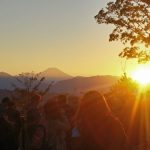 : Of course, no list of metro Tokyo fall nature spots is complete without this mountain due west of the Tokyo Metropolis. The lush landscape, which explodes into a sea of gold and oranges at this time, will remind you that all of the Capital Region used to look exactly like this and makes it very hard to remember that the people living around this idyllic setting still have Tokyo addresses!
: Of course, no list of metro Tokyo fall nature spots is complete without this mountain due west of the Tokyo Metropolis. The lush landscape, which explodes into a sea of gold and oranges at this time, will remind you that all of the Capital Region used to look exactly like this and makes it very hard to remember that the people living around this idyllic setting still have Tokyo addresses!
Only 45 minutes by special express train from Keio Shinjuku station; there are even special discount tickets you can purchase for the cable and lift cars if you do it ahead of time here when getting your train tickets. Inquire at the ticket vendor’s booth for instructions.
Where: Takaomachi, Hachioji, Tokyo 193-0844 (map)
Imperial Palace East Gardens
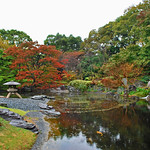 On the former site of Edo Castle’s honmaru [main circle], the last lines of defense, the Imperial Palace East Gardens, are open to the public and give you a ‘royal’ view of the autumnal foliage.
On the former site of Edo Castle’s honmaru [main circle], the last lines of defense, the Imperial Palace East Gardens, are open to the public and give you a ‘royal’ view of the autumnal foliage.
Here you can discover the Ninomiya Garden, which has some striking-red maple trees and gloriously yellow ginkgo trees hanging delicately over carefully maintained ponds and pathways. Elsewhere in the gardens, you can find an expansive lawn and the remains of the former castle tower’s foundations on top of the hill.
Where: 1-1 Chiyoda, Chiyoda City, Tokyo (map)
Mizumoto Park
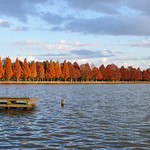 Built along the riverside of Shogotamari, in autumn, Mizumoto Park is an essential stop for those wanting to see the season’s beauty reflected in the undulating waters. It is one of the biggest parks in the city, and it boasts almost 2,000 dawn redwoods, some of which grow as tall as 165 feet.
Built along the riverside of Shogotamari, in autumn, Mizumoto Park is an essential stop for those wanting to see the season’s beauty reflected in the undulating waters. It is one of the biggest parks in the city, and it boasts almost 2,000 dawn redwoods, some of which grow as tall as 165 feet.
As well as being beautiful, it also covers more than 68 hectares, so despite still being in the center of the city, it is an ideal location for getting away from the Tokyo crowds. Furthermore, animal lovers should relax as they admire the feathered friends housed at the bird sanctuary.
Where: 3-2 Mizumotokoen, Katsushika City, Tokyo (map)
Shinjuku Gyoen
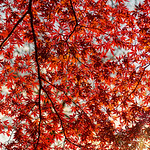 Another of Tokyo’s biggest parks – and arguably one of the best known – Shinjuku Gyoen is perhaps more readily associated with the springtime sakura. In fall, the area around the southern ponds explodes with the glorious reds of the momiji.
Another of Tokyo’s biggest parks – and arguably one of the best known – Shinjuku Gyoen is perhaps more readily associated with the springtime sakura. In fall, the area around the southern ponds explodes with the glorious reds of the momiji.
With its islands, ponds, and bridges, the Japanese Landscape Garden – the oldest of the park’s gardens – is a beautiful and serene area to wander amongst the resplendent autumn colors. Furthermore, in the first two weeks of November, a chrysanthemum exhibit is held, with pavilions dotted here and there. Down near the Sendagaya entrance, you can find Momijiyama [Maple tree Mountain], where you can find more beautiful bursts of color and a greater concentration of maple trees yet. Not just a clever name…
Where: 11 Naitomachi, Shinjuku City, Tokyo (map)
— By Jason L. Gatewood
Photo:FoxyStranger Kawasaki [CC BY-SA 3.0], via Wikimedia Commons
Photo: www.kabegami.com “代々木公園の紅葉” by elimo (CC BY-SA 2.0) -Modified
Photo: By Kakidai (Own work) [CC BY-SA 3.0], via Wikimedia Commons -Modified
Photo: By Flickr user kanagen [CC BY 2.0], via Wikimedia Commons -Modified
Photo: Creative Commons “Meguro gawa sakura.jpg” -Modified
Photo: By Momotarou2012 (Own work) [CC BY-SA 3.0], via Wikimedia Commons
Photo: By Katsutoshi Seki (Own work) [CC BY-SA 3.0], via Wikimedia Commons
Photo: By Kanchi1979 (Own work) [CC BY-SA 4.0], via Wikimedia Commons
Photo: By Jason L Gatewood (own work)
Photo: By M’s photography via flickr.com [CC BY 2.0] – Modified
Photo: By hiroshiykw via flickr.com [CC BY 2.0] – Modified
Photo: By Kirk K via flickr.com [CC BY 2.0] – Modified
1 comment so far
Fall and Winter Festivals in Tokyo | Japan Info SwapPosted on12:27 am - Oct 30, 2018
[…] let’s not forget about fall leaf viewing and winter illumination festivals that are popping up around town during this time as […]
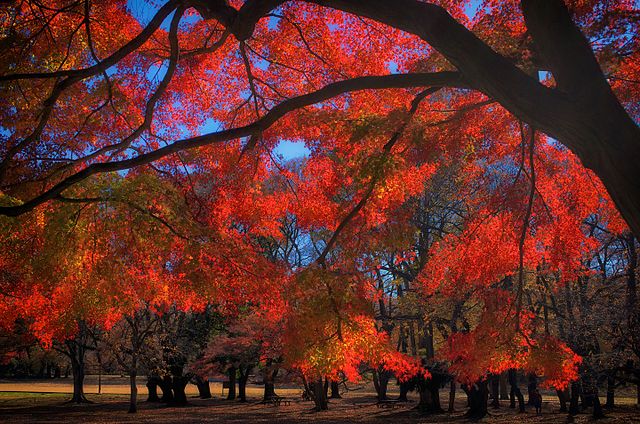

About the author